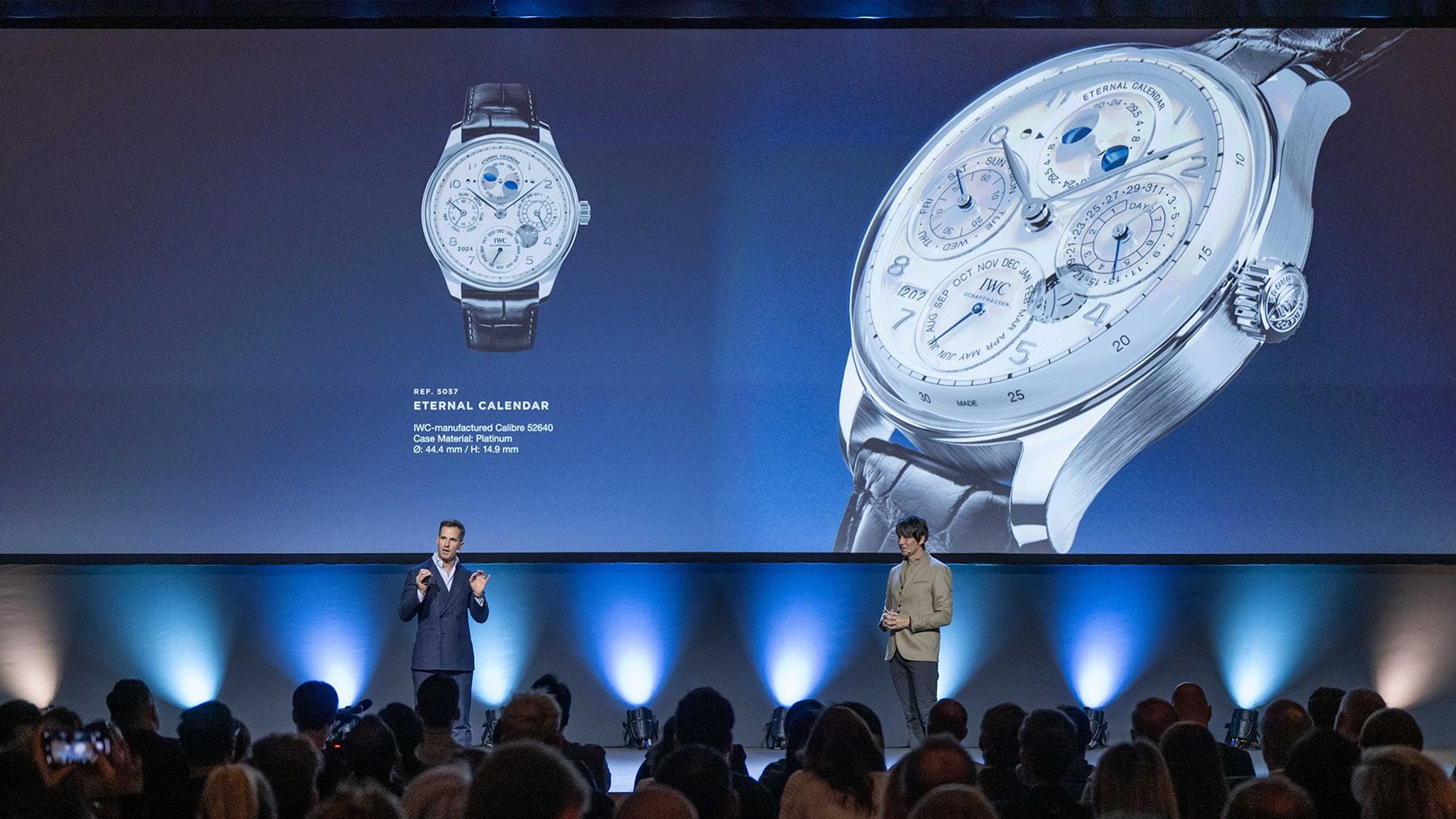The Luxury Watches Downturn, Explained

The value of Swiss watch exports fell by 16.1 percent in March compared to the same month last year, according to a report released mid-April, just days after Watches & Wonders, by the Federation of the Swiss Watch Industry. The sharp decline, which was equivalent to 380 million Swiss francs and capped a first quarter decrease of 6.3 percent, follows months of retailer reports that consumer demand had cooled.
Exports to China and Hong Kong were particularly hard hit, falling 41.5 percent and 44.2 percent respectively in March. The US, by far the industry’s largest export market, recorded a smaller decline, with exports falling 6.5 percent over the month.
How bad is the slowdown?
The slide in Swiss watches appears to be more pronounced than the wider luxury slowdown. Sector leader LVMH’s total first quarter sales were up 3 percent to €20.7 billion. (Hard luxury titan Richemont will report its annual results on May 17.) But analysts urged perspective.
“We need to see the evolution in Swiss watch exports in the broader context of luxury demand moderation after post-Covid euphoria,” said Luca Solca, Bernstein’s head of luxury goods research. “The moderation in this category seems greater because of higher exposure to wholesale: the wholesale channel would shift to destocking mode when they see softer demand.”
As the pandemic waned, Swiss watch exports spiked, reaching a record 26.7 billion Swiss francs last year, a year-on-year increase of 7.6 percent. But some argue this has created unrealistic expectations. “A return to 2019 levels of demand would translate into Swiss watch exports of 22 million Swiss francs, which was a high watermark for the entire 2010s decade,” said Rob Cordero, editor-in-chief of the specialist industry title WatchPro. “This year’s cooling sales should not be seen as a crisis that poses an existential threat to established brands.”
In a report published last week, RBC Capital Markets forecasted that the Swiss watch industry could contract by 7 percent in 2024, but called it a “post-pandemic normalisation phase.”
As well as being geographically diverse, the decline was evident across export price segments.
The higher end, that is watches with an export value above 3,000 Swiss francs, has been a significant growth driver for the industry, with exports in the segment increasing in value by 9.4 percent in 2023 and accounting for 92 percent of the industry’s expansion, according to the FH. But RBC forecasts a high-end segment decrease in value of 10 percent this year, not much better than the 12 percent decline in values in the 500 to 3,000 Swiss franc segment. (Export values are roughly half retail.)
What’s driving the decline?
Industry insiders put much of the blame for flagging exports on China.
“We’ve seen a decline, notably due to the uncertain economic situation in China,” said Yves Bugmann, president of the FH. “The real estate market is under pressure there, which creates insecurity in this market and this phenomenon has an impact on consumer confidence. Other markets however are still positive in the first trimester.” Exports to the US, Japan and the UAE all recorded low-level growth in the first three months of the year, but reversing the current downward trend would depend on the Chinese market, added Bugmann.
One analyst linked March’s sudden decline to an “overreaction” from retailers. “The 16 percent drop seen in March might reflect an overreaction of the market,” said LuxeConsult founder Oliver Müller, noting “the real and tangible consequence of retailers substantially reducing their orders, because they’ve been sitting on inventories that are becoming a problem, tying up cash.”
Brands and retailers will be nervous of the impact the downturn could have on discounting culture and particularly the grey market, where re-sellers list new watches offloaded by cash-strapped retailers at reduced prices. In 2018, some brands were forced to buy-back unsold stock to counter the rise of discounted new watches on the grey market. Richemont was reported to have destroyed nearly €500 million worth of watches at the time.
“There is a danger that manufacturers will not step on the brakes hard enough, and will produce more watches this year than they can sell,” said Cordero. “When brand new watches are being offered at 25 percent or more below retail on Chrono24, they become a great deal harder to shift for authorised dealers.”
According to RBC’s report, inventory levels on the online watch marketplace Chrono24 increased year-on-year to March by 11 percent to 355,000 units, although listings of new watches recorded only a 3 percent rise.
When will the tide turn?
Analysts said it was difficult to forecast when the tide might turn. “We expect moderation to continue at least into 1H24E,” said Solca. “The wild card would be an improvement in Chinese middle class sentiment, which at the moment is still low.”
Müller went further. “I’m hearing strange theories that the second half of 2024 might show a change of trend, but I don’t understand why this would happen,” he said. “The geopolitical factors won’t turn to green by then, with at least two major conflicts going on in Ukraine and the Middle East. There are also a lot of negative economic factors, which are not going to change quickly. And foremost, China won’t restart its luxury consumption to pre-Covid levels anytime soon.”
According to a Morgan Stanley report analysing the Swiss watch industry, even in a record year, 15 of the top 50 Swiss watch companies saw a decline in revenues in 2023, including Longines at Swatch Group, IWC at Richemont and TAG Heuer at LVMH.
Müller, who co-authored the report, said the industry would be propped up by a small handful of brands. “Strong brands such as Rolex, Patek Philippe and Richard Mille have all the pricing power to enforce price increases, which will compensate for the lack of organic growth,” he said.
There were bright spots. While most segments were feeling the pinch, Müller said the top end of the market remained unaffected. “The only price segment still growing in the first quarter of 2024 is the one with watches selling above 40,000 Swiss francs,” he said.
Bugmann pointed to India, where exports in the first quarter increased by 13.2 percent. India has long been identified by analysts as a future growth market for luxury watches, although to date, it’s been a slow burn. But a free-trade agreement between the European Free Trade Association (which includes Switzerland) and India signed in March is set to reduce import duties on Swiss watches gradually over the next seven years. “India will certainly also give a new strategic importance for Swiss watch exports,” said Bugmann.
The industry will ride out the storm, he predicted. “The Swiss watch industry is a centuries-old industry and has a lot of experience with economic fluctuations,” he said. “I am very optimistic for our products and the future.”






Leave feedback about this